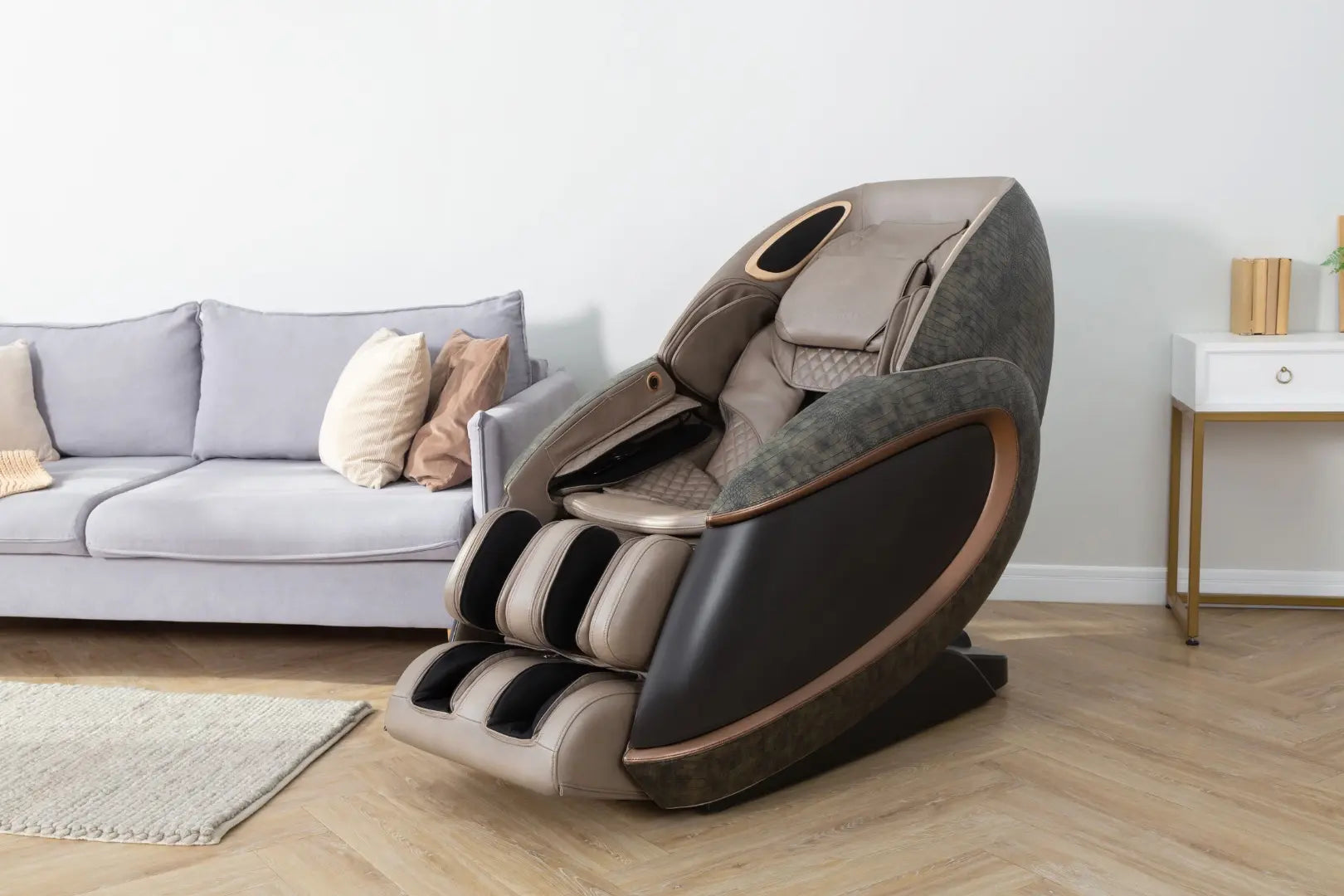
Can a Massage Chair Replace Physical Therapy? Here’s What to Know

Pain relief and physical recovery are top concerns for many people these days. Whether it's from an injury, chronic condition, or daily stress, more individuals are seeking ways to manage discomfort and improve mobility. While physical therapy has long been a go-to solution, massage chairs have grown in popularity as a convenient, home-based alternative. But here’s the big question: Can a massage chair really replace physical therapy?
Understanding Physical Therapy
What Physical Therapy Involves
Physical therapy (PT) is a medical practice led by licensed professionals who assess, diagnose, and treat physical impairments. It involves a mix of:
- Manual techniques (like joint mobilization and soft tissue massage)
- Targeted exercises to restore strength and mobility
- Rehabilitation protocols tailored to recovery timelines
- Ongoing evaluations to track progress and adjust treatment
PT is more than just symptom relief—it’s about functional recovery, building strength, and preventing future issues.
Common Reasons for Physical Therapy
Many people are referred to physical therapy for:
- Injury recovery (sprains, strains, fractures)
- Post-surgery rehab (joint replacements, spinal surgery)
- Chronic pain (arthritis, back pain, fibromyalgia)
- Mobility problems (aging, neurological disorders)
In short, physical therapy addresses both the root cause and symptoms of physical issues.
What Massage Chairs Offer
Key Features of Modern Massage Chairs
Today’s massage chairs are far more advanced than simple vibrating seats. Many high-end models offer:
- Shiatsu and kneading massage to mimic therapist hand movements
- Heat therapy to soothe tight muscles
- Zero gravity recline to reduce pressure on the spine
- Air compression to stimulate circulation in limbs
- Foot and calf rollers for complete lower-body relief
They provide an immersive experience from the comfort of home.
Benefits for Muscle Relief and Circulation
Massage chairs offer many therapeutic advantages, especially for mild muscle tension and stress:
- Improve blood flow and oxygen delivery
- Promote muscle relaxation and reduce stiffness
- Help with mental relaxation and sleep quality
They’re excellent for routine use and stress management.
Limitations of Massage Chairs
Despite the perks, massage chairs come with limitations:
- No professional diagnosis or adjustment based on condition
- Preset programs that may not target specific injuries
- They offer passive treatment—no strengthening or mobility work
This makes them less suitable for complex injuries or medical rehabilitation.
Comparing the Two: Massage Chair vs Physical Therapy
Short-Term Relief vs Long-Term Recovery
A massage chair can provide immediate comfort, reduce soreness, and relax the body. However, physical therapy goes beyond that to rebuild strength and flexibility for lasting improvement.
Personalization and Human Touch
Physical therapists tailor treatment to your exact condition. They adjust intensity, positioning, and exercise plans over time. Massage chairs, while adjustable, rely on general settings that don’t evolve with your healing.
Injury-Specific Care
If you’re dealing with a surgical recovery or a severe injury, a massage chair can’t provide the structured progression needed. Physical therapy includes manual corrections and guided exercises that are critical to proper recovery.
When a Massage Chair Might Be Enough
Everyday Stress and Minor Aches
If you're managing work-related stiffness, occasional back pain, or muscle tension after workouts, a massage chair is a valuable tool for relaxation and maintenance.
Maintenance Between PT Sessions
For those undergoing therapy, massage chairs can complement the process. Using a chair at home between sessions may relieve pain, promote blood flow, and help muscles recover more efficiently.
When You Should Stick to Physical Therapy
Post-Surgery or Injury Recovery
Surgery patients require expert supervision, especially during early healing. A massage chair can’t substitute the nuanced care provided by a licensed therapist.
Chronic Pain or Mobility Loss
Issues like neuropathy, balance problems, or arthritic stiffness need hands-on movement retraining. Physical therapists create a path to restore strength, mobility, and quality of life—something a chair cannot offer.
A Balanced Approach: Can They Work Together?
Absolutely. You don’t have to choose one or the other. In fact, many wellness professionals suggest using massage chairs alongside physical therapy. Together, they can:
- Reduce pain between sessions
- Promote relaxation before or after physical therapy
- Speed up muscle recovery
- Improve treatment outcomes over time
It’s about finding the right mix of passive and active care that works for your body.
Can a Massage Chair Replace Physical Therapy?
In short—no, a massage chair can’t fully replace physical therapy, especially when medical guidance, muscle retraining, or injury rehab is needed. However, for stress relief, minor aches, and daily comfort, massage chairs are incredibly valuable.
Think of them as a supportive tool, not a replacement.
Always listen to your body, and consult a healthcare provider before deciding. If you’re managing a serious condition, physical therapy remains essential. But if you're looking to complement your recovery or boost wellness, a massage chair might be the perfect addition to your routine.
